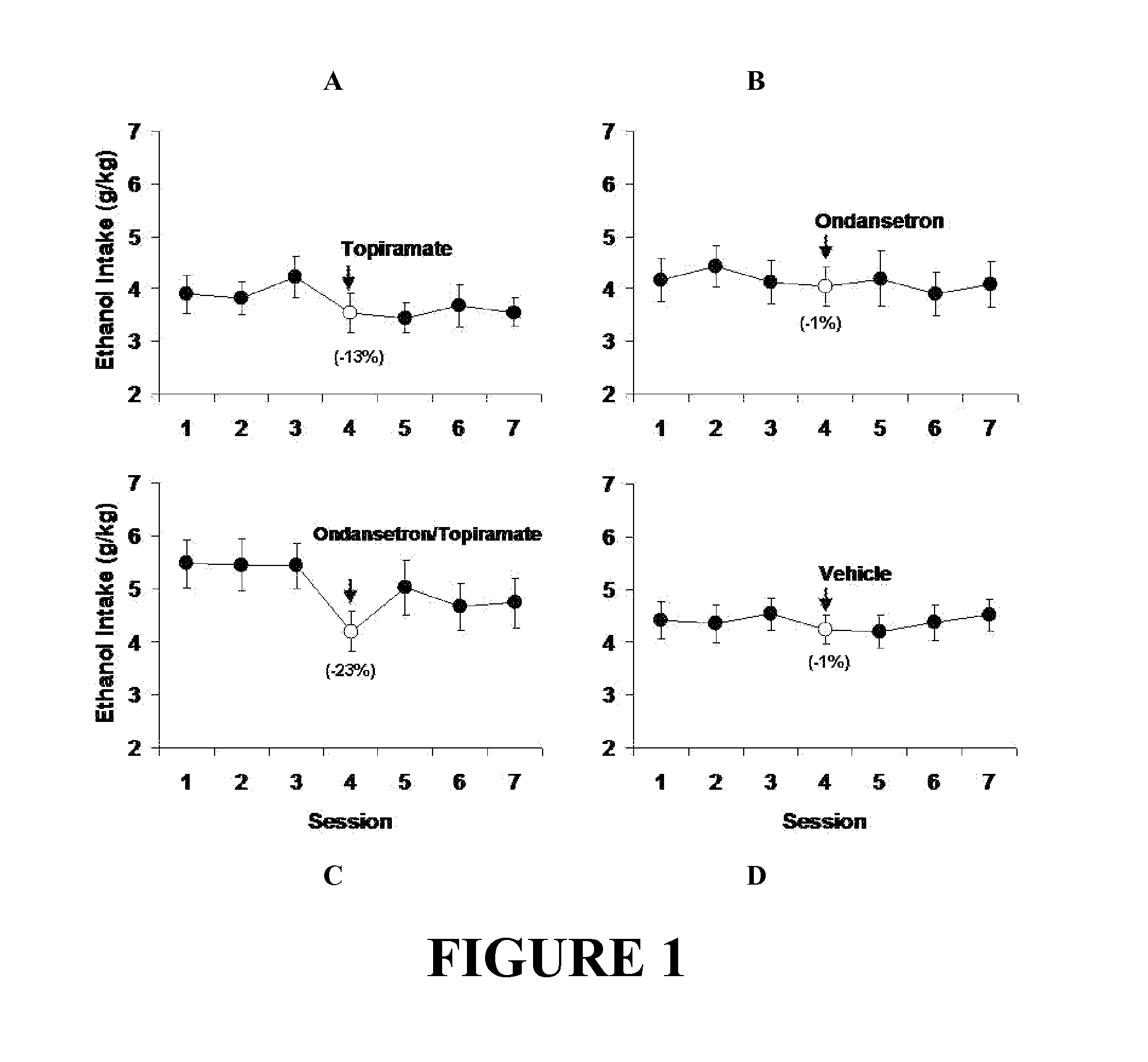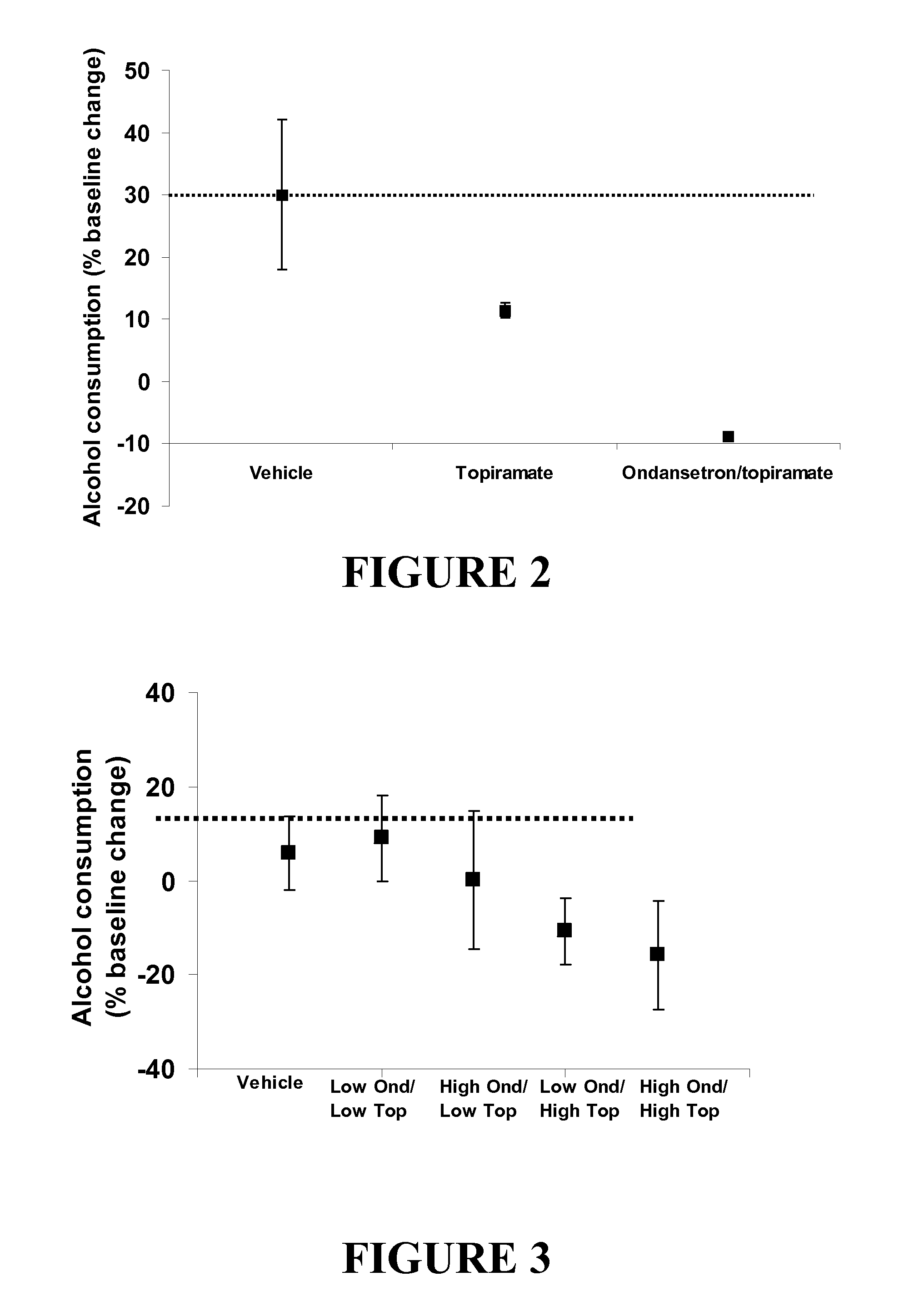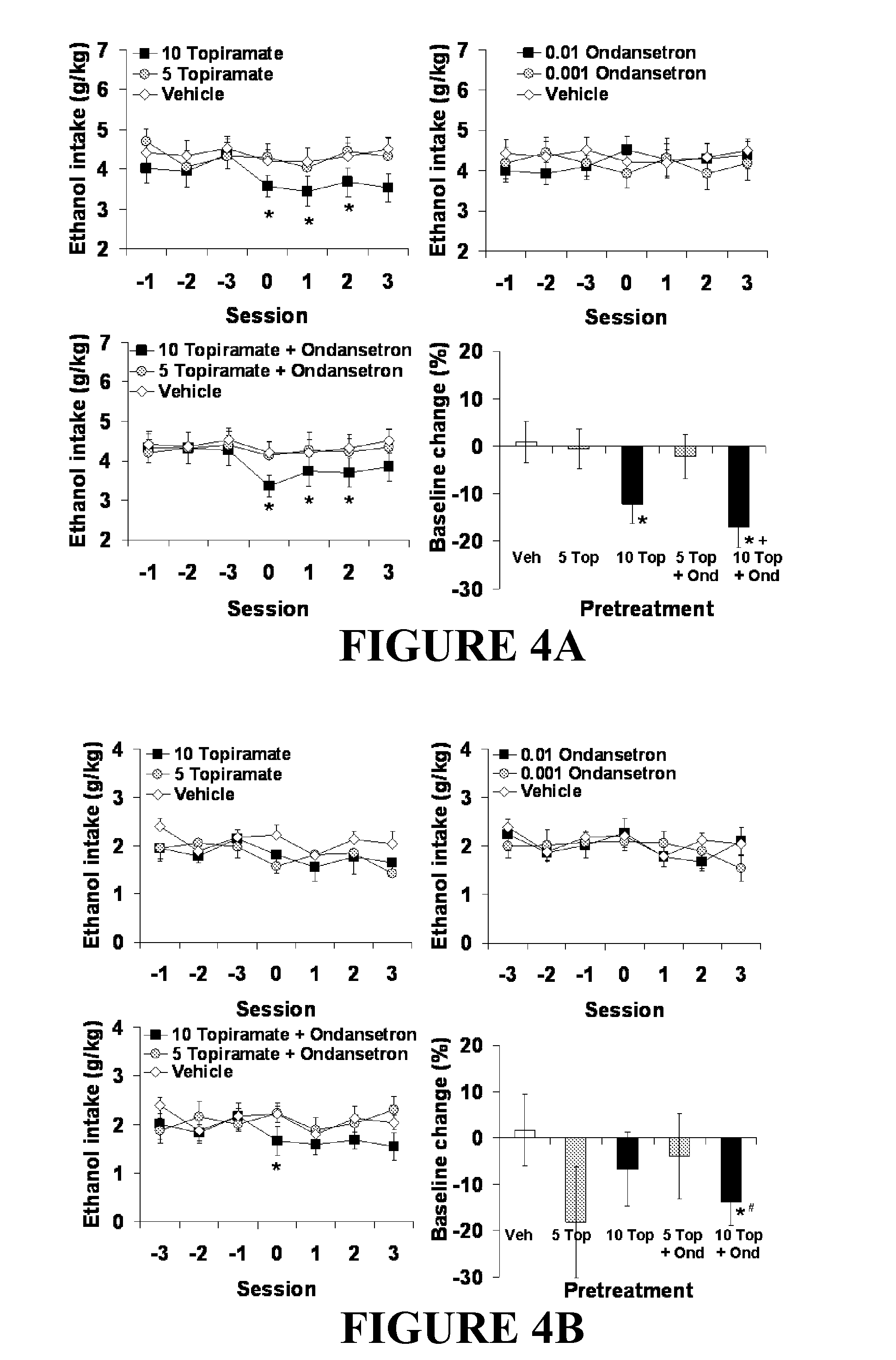Combined Effects of Topiramate and Ondansetron on Alcohol Consumption
a technology of topiramate and ondansetron, which is applied in the field of combination therapies, can solve the problems of limited utility of disulfiram, inability to enhance abstinence, and flushing, and achieve the effect of decreasing impulses, reducing cravings or impulsivity
- Summary
- Abstract
- Description
- Claims
- Application Information
AI Technical Summary
Benefits of technology
Problems solved by technology
Method used
Image
Examples
embodiments
[0217]The present invention encompasses the use of combinations of drugs or compounds to treat addictive and compulsive diseases and disorders, particular alcohol-related diseases and disorders. The present invention further encompasses the use of adjunctive treatments and therapy such as psychosocial management regimes, hypnosis, and acupuncture.
[0218]In some embodiments, a first compound and a second compound are administered nearly simultaneously. In other embodiments, a first compound is administered prior to the second compound. In yet other embodiments, the first compound is administered subsequent to the second compound. If three or more compounds are administered, one of ordinary skill in the art will appreciate that the three or more compounds can be administered simultaneously or in varying order.
[0219]In certain embodiments disclosed herein, an individual is given a pharmaceutical composition comprising a combination of two or more compounds to treat or prevent an addicti...
example 1
[0404]Combined effect of topiramate (10 mg / kg, IP) and ondansetron (0.001 mg / kg, IP) on alcohol consumption in alcohol-preferring (P) rats. While topiramate alone produced modest decreases in alcohol consumption (FIG. 1A, upper left panel; e.g., 13±5% decrease from baseline), when combined with a dose of ondansetron that did not affect alcohol consumption on its own (FIG. 1B, upper right panel; e.g., 1%±7% decrease from baseline), robust and persistent decreases from baseline were observed on alcohol consumption (FIG. 1C, lower left panel; e.g., 23%±5% decrease from baseline). No significant differences were observed following vehicle injection (FIG. 1D, lower right panel) or following other topiramate / ondansetron combinations (data not shown). Data were plotted across 7 consecutive sessions, which include a 3-day baseline period, the test session in which the ondansetron and / or topiramate injection was administered, and the 3 sessions that followed the test session. Each data point...
example 2
[0405]Combined effect of topiramate (10 mg / kg, IP) and ondansetron (0.001 mg / kg, IP) on alcohol consumption following a two-week abstinence period in alcohol-preferring (P) rats. Rats were given unlimited access to alcohol (10%) under a 24 hour access two-bottle choice procedure for a minimum of three months prior abstinence in order to induce alcohol dependence. During the two week abstinence period rats had full access to food and water. Subsequently, alcohol solutions were reintroduced and the effect of topiramate alone (10 mg / kg) and in combination with ondansetron (0.001 mg / kg) was examined. As expected, vehicle-treated rats showed a marked increase in alcohol consumption following abstinence (FIG. 2). Topiramate attenuated the alcohol deprivation effect on its own. When topiramate was combined with a low level of ondansetron that did not affect alcohol consumption on its own, not only was the alcohol deprivation effect completely blocked, but this combination decreased consump...
PUM
| Property | Measurement | Unit |
|---|---|---|
| pH | aaaaa | aaaaa |
| w/w | aaaaa | aaaaa |
| temperature | aaaaa | aaaaa |
Abstract
Description
Claims
Application Information
 Login to View More
Login to View More - R&D
- Intellectual Property
- Life Sciences
- Materials
- Tech Scout
- Unparalleled Data Quality
- Higher Quality Content
- 60% Fewer Hallucinations
Browse by: Latest US Patents, China's latest patents, Technical Efficacy Thesaurus, Application Domain, Technology Topic, Popular Technical Reports.
© 2025 PatSnap. All rights reserved.Legal|Privacy policy|Modern Slavery Act Transparency Statement|Sitemap|About US| Contact US: help@patsnap.com



